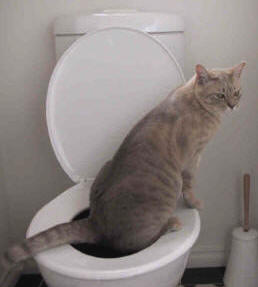What are your ideas regarding How to Dispose of Cat Poop and Litter Without Plastic Bags?

Intro
As pet cat owners, it's vital to bear in mind how we take care of our feline buddies' waste. While it may seem hassle-free to flush feline poop down the bathroom, this technique can have damaging effects for both the setting and human health.
Environmental Impact
Flushing pet cat poop presents hazardous pathogens and parasites into the water system, positioning a substantial risk to water environments. These impurities can adversely affect aquatic life and concession water high quality.
Wellness Risks
Along with environmental concerns, flushing pet cat waste can likewise position wellness threats to humans. Cat feces may consist of Toxoplasma gondii, a parasite that can trigger toxoplasmosis-- a potentially extreme ailment, especially for expectant women and people with weakened immune systems.
Alternatives to Flushing
Luckily, there are more secure and more liable means to deal with cat poop. Consider the adhering to alternatives:
1. Scoop and Dispose in Trash
One of the most typical technique of taking care of feline poop is to scoop it into an eco-friendly bag and toss it in the garbage. Be sure to use a committed trash inside story and take care of the waste quickly.
2. Usage Biodegradable Litter
Select naturally degradable cat litter made from materials such as corn or wheat. These litters are eco-friendly and can be securely taken care of in the trash.
3. Hide in the Yard
If you have a backyard, consider hiding cat waste in a marked location away from vegetable yards and water resources. Make certain to dig deep adequate to avoid contamination of groundwater.
4. Install a Pet Waste Disposal System
Purchase an animal garbage disposal system especially made for cat waste. These systems make use of enzymes to break down the waste, reducing odor and environmental effect.
Conclusion
Responsible pet possession extends beyond supplying food and shelter-- it likewise entails proper waste administration. By avoiding purging cat poop down the bathroom and opting for different disposal techniques, we can decrease our ecological impact and secure human health and wellness.
Why Can’t I Flush Cat Poop?
It Spreads a Parasite
Cats are frequently infected with a parasite called toxoplasma gondii. The parasite causes an infection called toxoplasmosis. It is usually harmless to cats. The parasite only uses cat poop as a host for its eggs. Otherwise, the cat’s immune system usually keeps the infection at low enough levels to maintain its own health. But it does not stop the develop of eggs. These eggs are tiny and surprisingly tough. They may survive for a year before they begin to grow. But that’s the problem.
Our wastewater system is not designed to deal with toxoplasmosis eggs. Instead, most eggs will flush from your toilet into sewers and wastewater management plants. After the sewage is treated for many other harmful things in it, it is typically released into local rivers, lakes, or oceans. Here, the toxoplasmosis eggs can find new hosts, including starfish, crabs, otters, and many other wildlife. For many, this is a significant risk to their health. Toxoplasmosis can also end up infecting water sources that are important for agriculture, which means our deer, pigs, and sheep can get infected too.
Is There Risk to Humans?
There can be a risk to human life from flushing cat poop down the toilet. If you do so, the parasites from your cat’s poop can end up in shellfish, game animals, or livestock. If this meat is then served raw or undercooked, the people who eat it can get sick.
In fact, according to the CDC, 40 million people in the United States are infected with toxoplasma gondii. They get it from exposure to infected seafood, or from some kind of cat poop contamination, like drinking from a stream that is contaminated or touching anything that has come into contact with cat poop. That includes just cleaning a cat litter box.
Most people who get infected with these parasites will not develop any symptoms. However, for pregnant women or for those with compromised immune systems, the parasite can cause severe health problems.
How to Handle Cat Poop
The best way to handle cat poop is actually to clean the box more often. The eggs that the parasite sheds will not become active until one to five days after the cat poops. That means that if you clean daily, you’re much less likely to come into direct contact with infectious eggs.
That said, always dispose of cat poop in the garbage and not down the toilet. Wash your hands before and after you clean the litter box, and bring the bag of poop right outside to your garbage bins.
https://trenchlesssolutionsusa.com/why-cant-i-flush-cat-poop/

Hopefully you enjoyed our section about How to Dispose of Cat Poop and Litter Without Plastic Bags. Thank you so much for taking a few minutes to browse our blog. Liked our blog entry? Please share it. Let others find it. Thank you for your time. Visit again soon.
Call Today